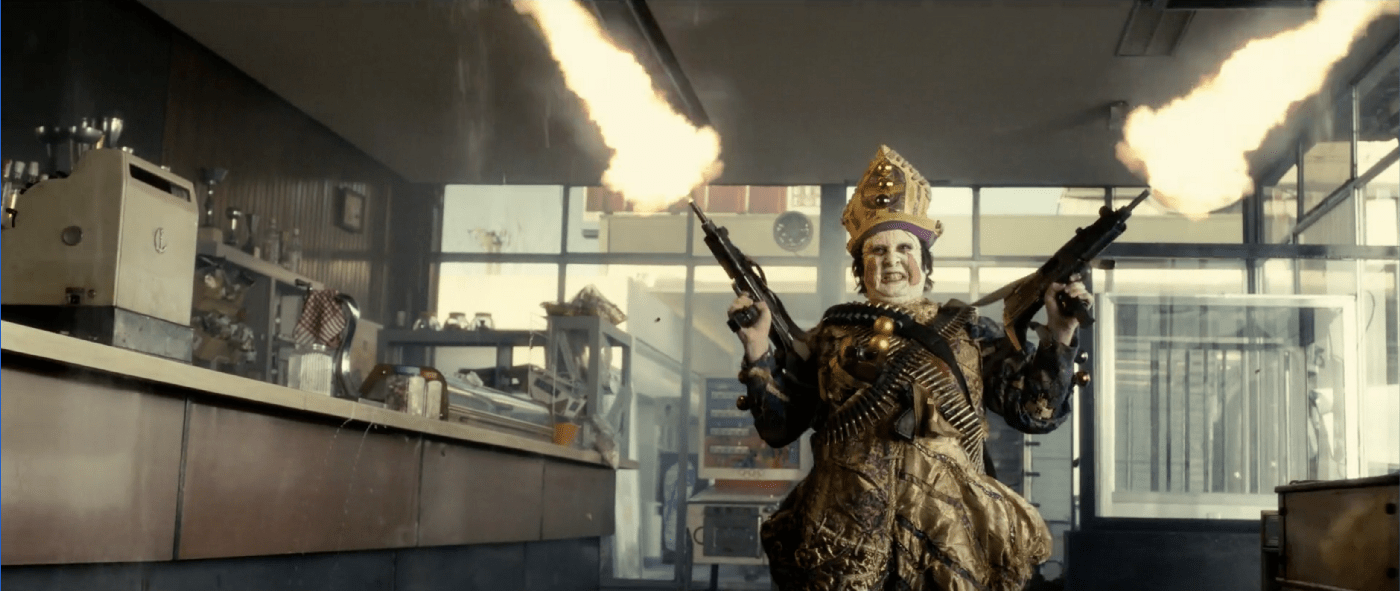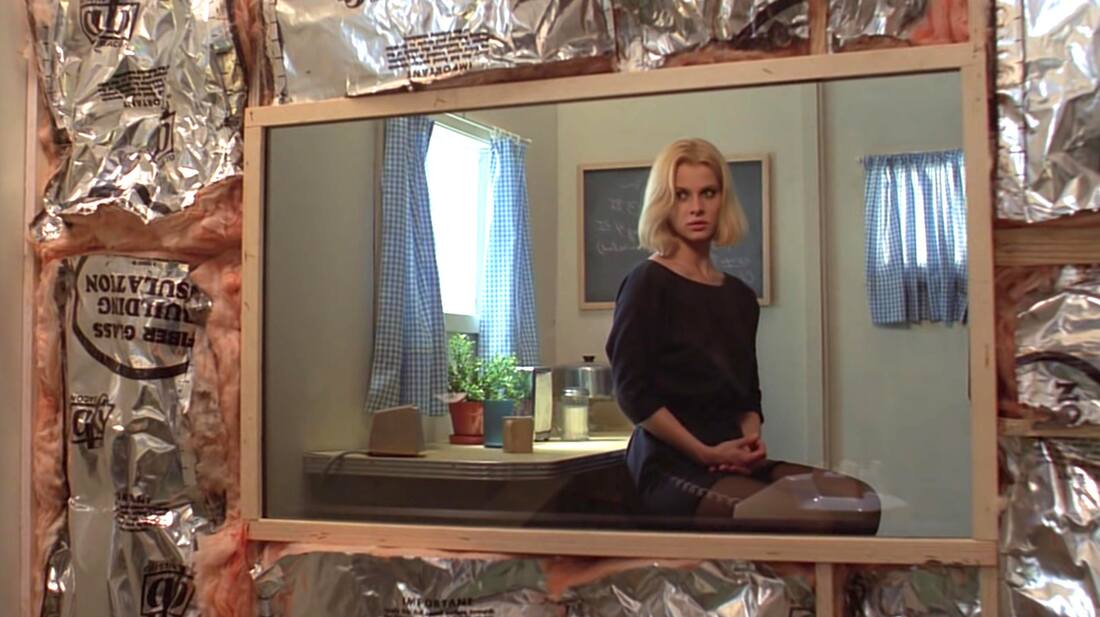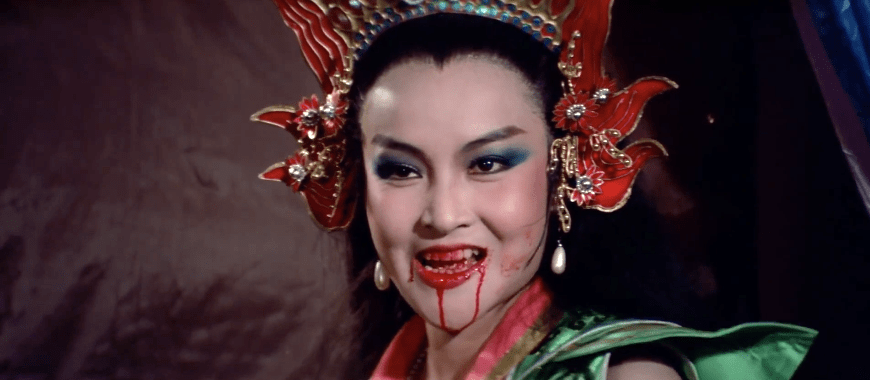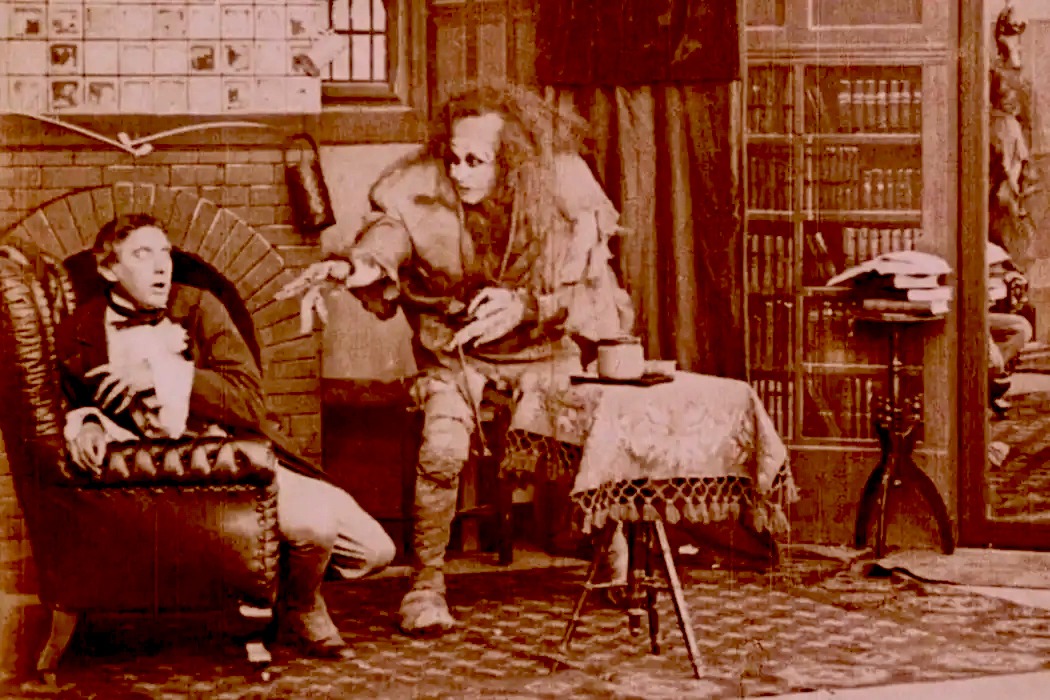
The Last Circus is a rough ride. The pacing is fast, but what makes it truly disorienting is the sudden sharp turns. The plot and mood swing wildly between rage, love, death, sex, slapstick, and satire. You’re laughing one minute and then horrified the next, often in the same scene. Not only does The Last Circus switch moods it switches modes. It’s a pastiche, a parody, an art film, a batman film, a Fellini film, a Sam Peckinpah film, and many more.
Despite all the frantic swerving around, there is a consistent framework that underlies the whole film. The narrative is structured around the idea of opposing clowns, the funny one, and the sad one. This dialectic has been with us since ancient times. It can be seen in the Socks and Buskin from Ancient Greece. The two faces represent the two most general ideas of genre, comedy, and tragedy. As generalized symbols, they also represent our subjective experience of life. They symbolize the inner narrative that we weave as we live and examine our lives. They convey a sense of fate in that we are each destined to face both polarities. This, of course, is a narrow way of categorizing the full spectrum of our experience but as an icon, it is meant as a sweeping summary of human life.

The Last Circus may use this oversimplified opposition but it not only blurs the line between the two, it folds in the rest of human experience as well. The happy clown vs. sad clown structure pops up unexpectedly throughout the film reminding us that what is happening on screen is in someway destined or the result of who our two lead characters are. We get engrossed in the plot and caught up in the tension and then someone makes reference to the sad or funny clown and we are reminded of the underlying framework.
It all takes place in the tragedy of Franco’s fascist Spain. Desperation, death, and cruelty provide the backdrop for an epic scale love triangle between the two clowns and stunningly beautiful femme fatale named Natalia.
The film blurs the line between clownish pantomime and deadly serious cruelty. It is meant to be funny when Punch hits Judy, but inevitably it goes on too long, and although the children continue to laugh the adults get uncomfortable.
Sergio, the funny clown, is a sadistic, drunk who regularly beats and brutalizes Natalia his girlfriend. The physical abuse is sexually arousing for both of them and often turns into rough, enthusiastic sex. This transformation changes the nature of the violence. There is the inhumane brutality of it, but there is also a performative element that is reminiscent of a clown’s exaggerated violence.

Early in The Last Circus, there is a scene that illustrates not only the love triangle but the multi-faceted nature of the film. It begins with Natalia and Sergio playing out their bloody panting scenario again, this time in a dinner. Sergio backs Natalia up against a wall with a window. On the other side of the glass is Javier, the sad clown. Javier is in love with Natalia and is hiding from Sergio’s wrath. Javier crouches down to stay out of sight but ends up pressed up against the other side of the wall. With each of Sergio’s heaving thrusts of coitus, Javier is knocked and bumped by the wall between him and the couple. Javier thinks Sergio is beating Natalia and cowers in fear.
The scene wrenches you between the horror and tragedy of an abusive relationship, the arousal of a torrid sex scene, the comedy of the other clown being buffeted by the whole thing, and the absurd parody of human folly. It’s intense and disorienting and before you can digest what is happening the scene and mood have changed.
The violence in the film is difficult to keep up with. There are horrifying moments that leave you upset and shaken, smashed together with cartoonish slapstick where what would normally be life-ending shocks to the body are just shaken off for the sake of comedy. There is a point in the film where they chose to include real footage from the Spanish Civil War. This is the sort of thing that can quickly become a problem. Real people, suffered real tragedy and their image should be treated with special respect. You don’t just coopt real human suffering for effect, however, The Last Circus is very deliberate with how they use it. The footage reads as yet another contrast between clowning, parody, and reality. It’s another shock between pretend violence and real violence.
There is a scene where Sergio attacks Javier with a huge wooden sledgehammer. Sergio has heaved Javier onto one of those carnival contraptions where you hit a lever with a hammer and try to ring a bell. Sergio begins swinging the hammer, smashing into Javier’s stomach with each blow. He hits him over and over again in a manner that would have likely killed Javier with the very first swing. The violence is an exaggerated parody, but not a humorous parody. It’s a deeply disturbing joke in that it is at the expense of our humanity. Our gravest actions are ridiculous.

The scene just hovers in an ambiguous space as the funny clown abuses the sad clown. They are playing out their roles. In truth, they are two actors playing out their roles as a funny clown and a sad clown. They do not really hate each other, they are just playing out their roles for the film. A film that offers us entertainment through the depiction of two clowns trying to kill each other. Javier coughs up blood and wails as he is mercilessly abused and we are left unsure of how to react.
Violent, even gory theater is as old as theater itself. The Ancient Romans put on plays where real convicts were actually murdered on stage. Jerry Springer and Maury Povich have made millions of dollars by displaying human suffering as entertainment. While the audience points at the fools and laughs they most likely experience a form of catharsis, just as the Ancient Greeks did when Oedipus cut out his eyes.

There is an overlap between the actor, the clown, the fool, the jester, and the buffoon. They are a vehicle for our derision just as they deride us. We laugh at them because they fail, but their failure is a depiction of our failure, our human folly. Television cartoons, professional wrestling, Buster Keaton, and Punch and Judy all present oversized conflict in a dramatic pantomime of violence.
The Last Circus embraces all of these things and turns the volume up so loud it’s frightening. Both Sergio and Javier end up leaving reality behind. Both of them undergo grotesque physical and mental distortions becoming terrifying parodies of clowns who in turn are meant to be comical parodies of us. Javier deliberately burns and mutilates his face so that it is permanently reconfigured to look like a horrific version of clown makeup. Then he stomps through Madrid clutching two machine guns indiscriminately mowing down anyone in his path. The violence is so over the top it is ludicrous and therefore funny, unlike the violence we see when we watch Franco’s men brutalize people, or when we watch Sergio beat Natalia.

The film challenges your ability to discern tragedy from comedy. It undermines the purpose and intention of our actions by calling into question their meaning and therefore their significance. Whether we are being serious or being foolish, whether our actions are funny or tragic what does it matter?
While taking on these existential issues the film throws in the Catholic Church. The film is heavy with Christian imagery. After World War Two there were many who were unable to forgive the Catholic Church for supporting Hitler, Franco, and Mussolini. The Church’s reprehensible complicity is referred to in many movies from Aguirre The Wrath of God to Pan’s Labyrinth. In The Last Circus, the rebels are forced by Franco’s soldiers to erect a giant stone cross that eventually becomes the site of the climactic fight at the end of the film. Javier’s clown costume is based on a pope costume. The image of the church is forced to join with an image of murderous rage and inanity. The most direct reproach to Catholicism’s role in the war is made when we watch a priest sanctify a firing squad while they kill line after line of people.
The Last Circus was released in 2011 three years after Christopher Nolan’s portrayal of the Joker in The Dark Knight, and 8 years before Joaquin Phoenix’s portrayal of the same in The Joker. The Last Circus far exceeds these other films in-depth but it certainly makes reference to the Batman character The Joker. The Joker has become an iconic figure that keeps reemerging in popular culture. His portrayal varies but there is always an emphasis on his tragic origin story. The Joker begins as a sad clown and degenerates into a sadistic happy clown.

The association of sadism and happiness is counterintuitive. Happiness is generally a social and extroverted emotion. Whereas sadness is often introverted. We see these emotions play out in Joker’s psyche but his sadism seems incongruent. The Joker finds glee in cruelty because he has been traumatized by cruelty. It’s a sort of psychotic or dissociative coping strategy whereby he embraces the cruelty he experienced thereby transforming it into something positive. The pain and sadness are so all-encompassing there is nothing left to do but revel in it.
Manic depression is marked by extreme highs and extreme lows that most often stay completely separate. There is such a thing as rapid cycling, but generally, the two states stay at extreme poles, thus the term bipolar disorder. Everything is either horrible or wonderful without shades of grey. The polarity is profoundly destructive. The depression can lead to suicide but the happiness or mania is seen as more dangerous. In a state of grandiose narcissism, the manic individual has the outsized bravado to mount all manner of schemes, and actions that may prove detrimental to themselves or others.
The Last Circus provides its own version of an origin story. We follow Javier’s life beginning with his childhood but he is not victimized by his parents instead he and his parents are victimized by Franco’s regime. Franco is a “happy clown” reveling in his narcissistic version of a fascist paradise. Like an abusive father, his cruelty ensures that his progeny will cruel and abusive as well.
The Last Circus was written and directed by Álex de la Iglesia. The tangled and layered nature of the film could only have been possible with the same person doing both jobs. The singularity of vision manages to blend form and content into a fluid interplay of all the opposing themes. The film juggles sadness and happiness, death and comedy, sex and war by having it all integrated through one person. It’s hard to evaluate the result as you run to keep up with it, but The Last Circus is an ambitious film that continually challenges you to wrestle with it.

If you enjoyed this article click here for more
www.filmofileshideout.com/archives/galder-gaztelu-urrutis-platform



